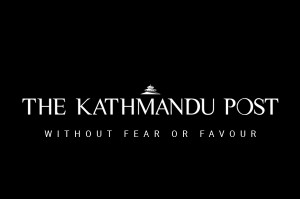Valley
Kathmandu Metropolitan city launches pilot to recharge depleting groundwater
Mayor says the initiative is a learning opportunity for authorities who plan to implement similar projects in other wards.
Anup Ojha
In a bid to replenish depleting groundwater in the city, Kathmandu Metropolitan City on Tuesday launched a pilot under which water is recharged by harvesting rainwater.
Environmentalists, urban planners, and local residents praised the initiative saying that such projects could help address a host of water-related issues the city is facing.
The pilot in Gongabu presents an opportunity for city officials to learn about groundwater, said Mayor Bidya Sundar Shakya following the project’s inauguration. He added that similar projects need to be implemented in all open spaces of the city.
Under the pilot, two 24-feet recharge wells have been dug on one ropani (5,476 sq meter) of public land in Gongabu Residential Area. Rainwater is first collected and then passed through a gutter and supplied to an underground tank. When the tank overflows, water then flows into the recharge wells that contain layers of boulders, aggregates and sand.
According to city officials, Rs 1.5 million has been allocated for the ‘Recharge Kathmandu’ project this year. The city plans to extend the project to wards 1 and 5 soon.
The project comes at a time when Kathmandu’s groundwater levels are receding at a rapid rate.
According to the Groundwater Resources Development Board, three decades ago water could be pumped from 8 to 10 meters below the surface, but now the same can be done only after digging 40 to 50 meters.
Figures from the Kathmandu Upatyaka Khanepani Limited also tell a similar story. The utility’s pump could draw 1,000 litres of groundwater per minute a few years ago, but now it only draws 700 liters per minute now. Prakash Kumar Rai, the spokesperson for the company, said that at present 80 deep-boring wells are in operation in Kathmandu. “We have been supplying 110 million liters of water every day, of which fifty percent comes from groundwater.”
Due to increased urbanisation, rise in the number of unplanned settlements, and the people’s tendency to seal open spaces with concrete, rainwater does not percolate into the soil the way it used to, said Urban Planner Suman Maher Shrestha. “Groundwater levels have dangerously come down in Kathmandu, and this government initiative will help to replenish it,” he added.
Geologists say that replenishment of groundwater and its sustainable use are needed to prevent the city from sinking. “Kathmandu’s groundwater has been overexploited. It’s geology is fragile; if the water is extracted at the same pace it is being extracted now, there is a high risk that land will sink in the city,” said Professor Khum Narayan Paudyal, department head at the Central Department of Geology, Tribhuvan University.
Water collected during the monsoon can help meet needs during the dry season, environmentalists say. “Groundwater harvesting is important in Nepal since we only have three months of monsoon,” said environmentalist Manjeet Dhakal. “That’s why rainwater harvesting is necessary. If it is well planned, this will be of great help to meet water needs in the post-monsoon period.”
Talking to the Post, Kishore Thapa, urban planner and former government secretary, said implementation of groundwater recharge projects will help reduce flash floods, which have been seen in Kathmandu and Bhaktapur in the past few years. “One of the reasons water is not being recharged is that earth is being sealed. The city must raise awareness among people to make pores on their land,” said Thapa.
Meanwhile, residents of Gongabu have also welcomed the move. “If given continuity seriously, this could be one of the best works of the metropolitan city,” said Gongabu resident and retired irrigation engineer Bishwonath Shrestha, 71. “Recharging water is like putting your money in a safe place so that you can take it out any time you need it.”




 12.99°C Kathmandu
12.99°C Kathmandu.jpg)









%20(1).jpg&w=300&height=200)

